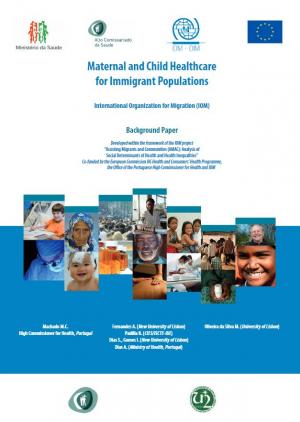Description
Caring for migrants’ health is a matter of human rights and a fundamental way of tackling unacceptable inequalities in health and healthcare provision. In the European Union, recent migration trends and phenomena such as the increasing feminization of migration, alongside with family reunification policies developed by some Member States, raise new concerns about the capacity of social and health policies to deal with newcomers’ groups.
Various international organizations have underlined that women area critical foundation for the sustainable development of the society in which they are integrated (UNFPA, 2005). Eff orts on education, maternal health and economic opportunities benefiting women and children have an immediate as well as long-term and intergenerational impact (World Bank, 2001). In addition, WHO highlights the importance of improving maternal and child health as an integral aspect for the decrease of family and community poverty (WHO, 2005). Within many groups, such as failed asylum seekers, trafficked people and undocumented migrants, women and children are recognized as being particularly vulnerable to health problems and often having reduced access to prevention and healthcare. Not only is maternal and child health therefore a priority, but also motherhood and childhood constitute a unique period in which to reach families, identify health problems and make a substantial intervention on health promotion and disease prevention.
Examples of prospective and retrospective research being carried out at national or regional level are: maternal, perinatal and infant mortality and morbidity (Belgium, UK, Netherlands, Sweden, Spain, Greece and Portugal), infection prevalence (Portugal, Spain), women and children access to healthcare services (Sweden, Portugal). Some of these studies also compare regular and irregular immigrant families.
In some Member States (Portugal, Spain), innovative legislation grants migrant families universal access to the National Health System regardless of their legal status in the national territory or their country of origin. Although there is a consensus that good practices should be jointly developed by the public, private and social sector, there is no general agreement on what good practices are or should be. Some initiatives that could be considered as good practice in this area are presented in this paper; namely in Portugal (health mobile units), Spain (maternal-child health prevention and promotion programmes and related specialised services, two case studies), and Cyprus (health visitor).
Formulating recommendations requires increased focus on access to healthcare systems, to prenatal and postnatal care, family planning and screening for HIV in conjunction with the development of innovative concepts for the planning of health promotion interventions which respond in an eff ective way to families’, women’s and children’s health needs and specifi cally address migrant groups.
Content:
- Relevant Facts, Figures and Trends in Maternal and Child Health in Migrant Populations
- European Union or Member States Policies, Programmes or Priorities in Migration and Health with Relevance for Maternal and Child Health
- Practice on Maternal and Child Healthcare for Migrants
- Conclusions
Region/Country (by coverage)
Publisher
International Organization for Migration
Project Type
